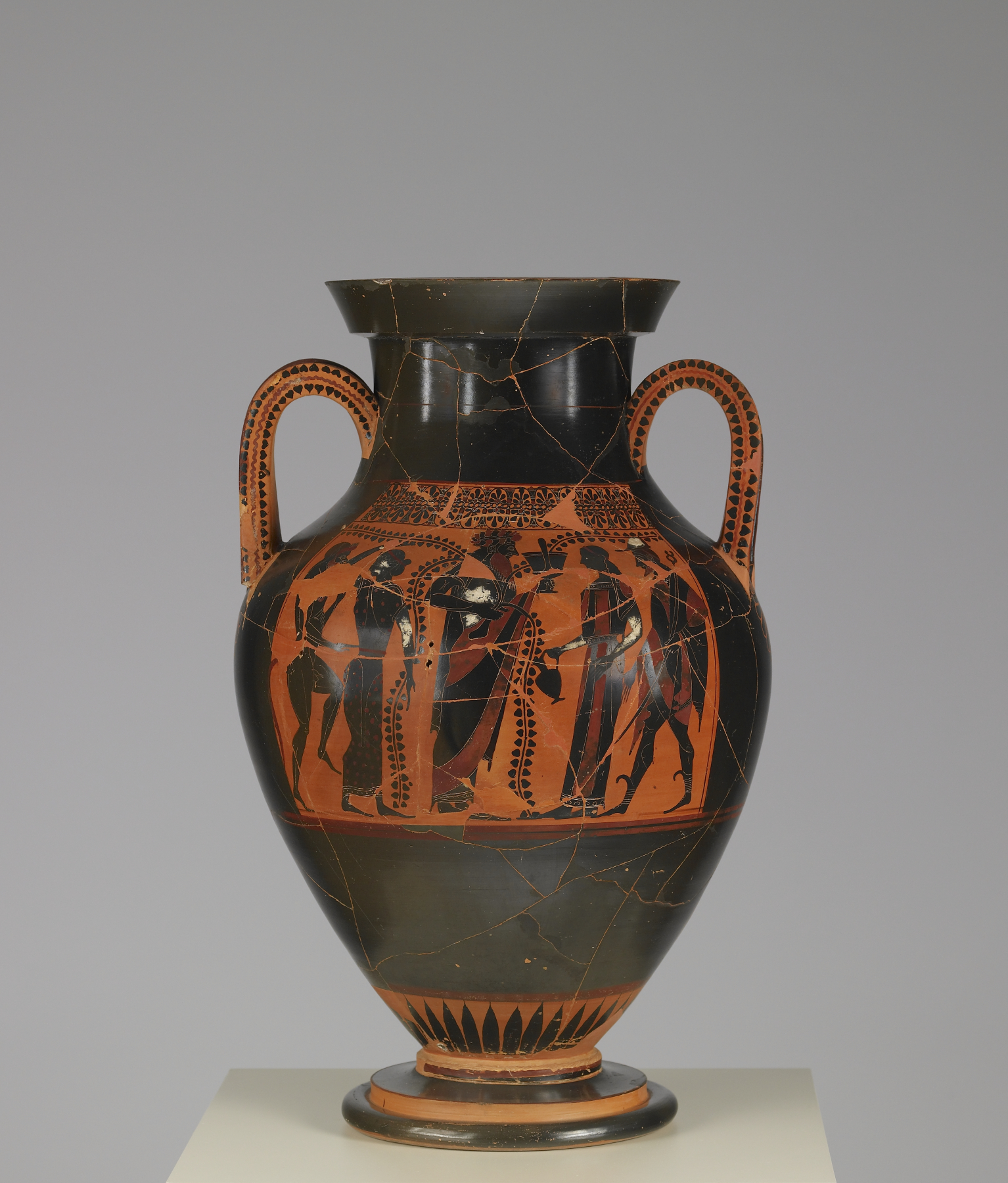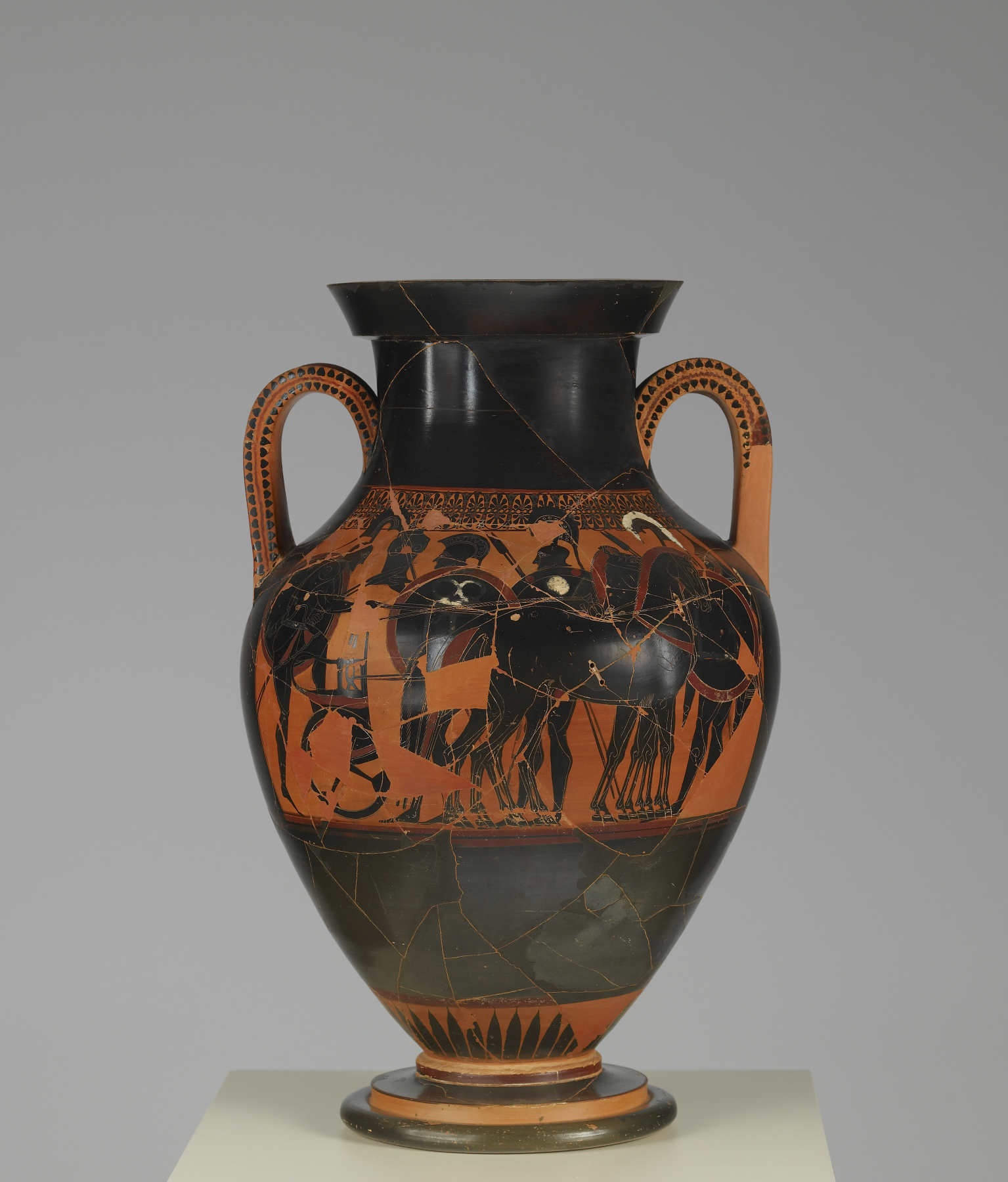Amphora with Dionysus with Entourage and Departure Scene
(Ancient Greece )
The Lysippides Painter is renowned for his work with another vase-painter, the Andokides Painter. They produced remarkable "bilingual" vases on which the Lysippides Painter painted one side in the black-figure technique, and the Andokides Painter painted the same image in the newly developed red-figure technique on the other side. On this vase, however, we have an example of the Lysippides Painter's early work in black-figure painting. On the front, Hermes escorts a woman towards the wine-god, Dionysus, whose satyr and maenad companions stand behind. On the back is a typical "departure scene," in which an armed warrior mounts his chariot as companions see him off.
Provenance
Provenance (from the French provenir, 'to come from/forth') is the chronology of the ownership, custody, or location of a historical object. Learn more about provenance at the Walters.
Don Marcello Massarenti Collection, Rome, no. 219; Henry Walters, Baltimore, 1902, by purchase; Walters Art Museum, 1931, by bequest.
Conservation
| Date | Description | Narrative |
|---|---|---|
| 2/15/1966 | Treatment | loss compensation; other |
| 6/4/1979 | Examination | examined for condition |
Geographies
Greece, Athens (Place of Origin)
Measurements
at handles: 21 5/8 x 13 in. (55 x 33 cm);
at top: 9 1/16 in. (23 cm) (diam.)
Credit Line
Acquired by Henry Walters with the Massarenti Collection, 1902
Location in Museum
Accession Number
In libraries, galleries, museums, and archives, an accession number is a unique identifier assigned to each object in the collection.
In libraries, galleries, museums, and archives, an accession number is a unique identifier assigned to each object in the collection.
48.12




